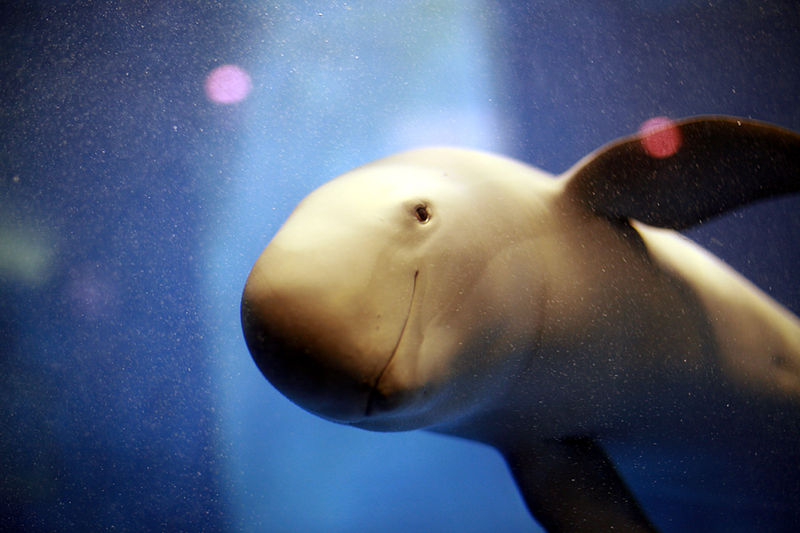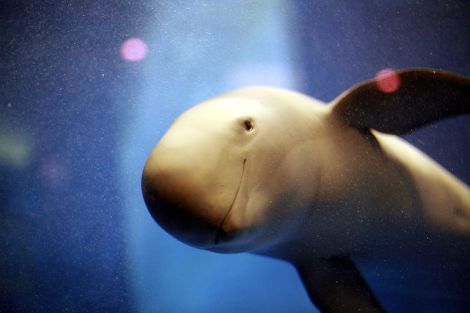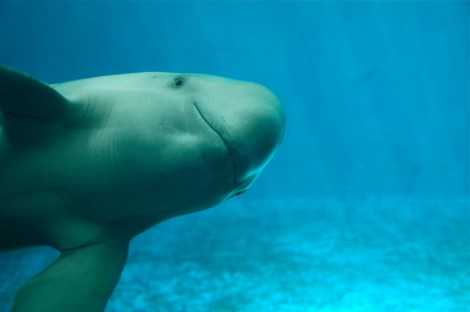China’s got wayyyyyyy too many pigs in its rivers (16,000 dead pigs in the Huangpu at last count!), but it’s dangerously short on “river pigs,” the colloquial name for the finless porpoise. (My first thought was “they’re finless, of course they’re going extinct; how do they MOVE?” but the name comes from their lack of dorsal fin. They do have flippers.) In over 2,000 miles of the Yangtze river, the World Wildlife Fund found only 380 of these smiley critters. That’s 50 percent less than there were six years ago.
The WWF estimates that this means there are about 1,000 finless porpoises in the wild — fewer, in other words, than the wild population of giant pandas, which clocks in at around 1,600. They give the river pigs 15 years to extinction unless we do something.
Lest you think we can blame this on predators or some kind of rare disease that afflicts only the happiest-looking marine mammals, the WWF is pretty clear on that score: We’re not weaseling out of this one.
The finless porpoise, which unlike the dolphin has a small dorsal ridge rather than a fin, has been hurt by human intrusion and environmental degradation.
“Food shortage and human disturbance such as increased shipping traffic are the major threats,” the WWF said, adding that researchers also discovered “traps that could affect finless porpoises”.
Waterways in China have become heavily contaminated with toxic waste from factories and farms—pollution blamed on more than three decades of rapid economic growth and lax enforcement of environmental protection laws.
Environmental activists also say the huge Three Gorges Dam and other hydropower projects on the Yangtze have upset the delicate ecological balance and harmed aquatic life in the river.




